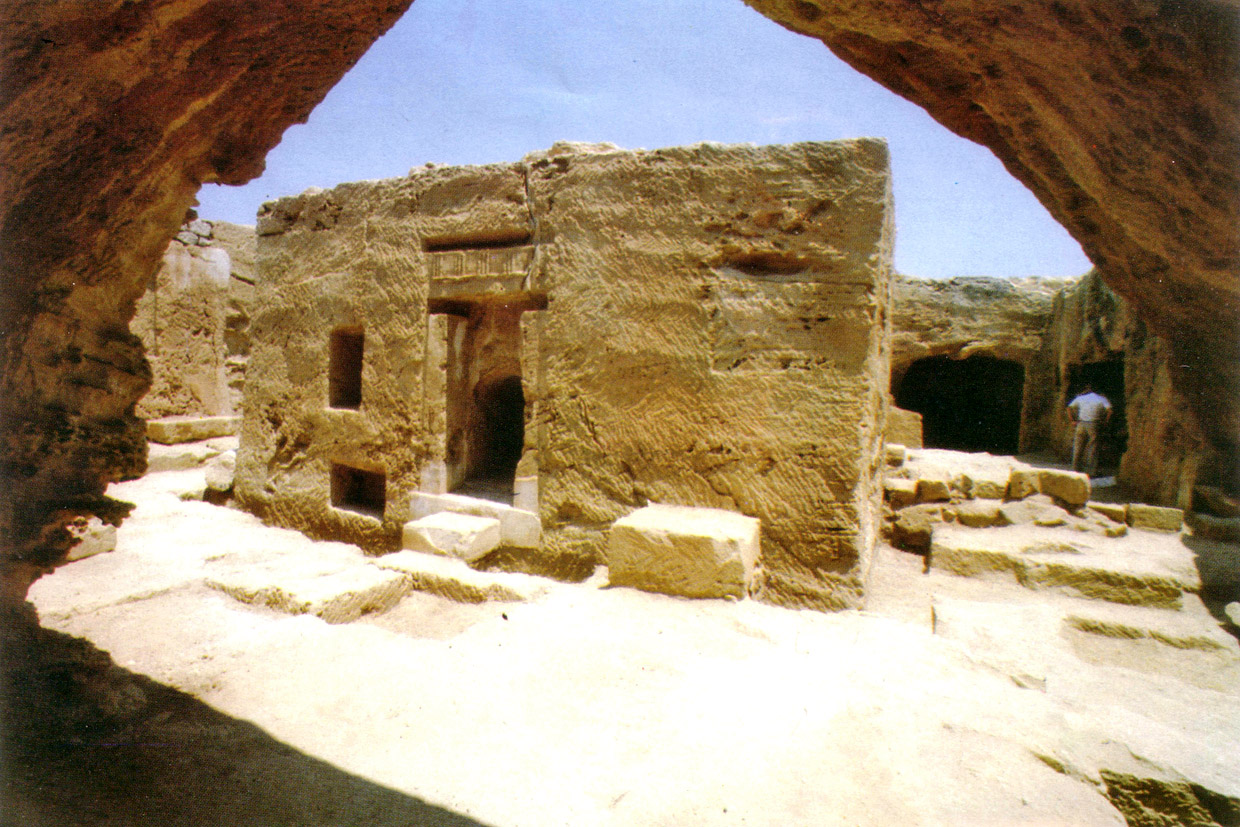
Cyprus. Paphos, Tombs of the KingsPhoto by Olga Lyubimova
Tomb VIII (“Ptolemaic”). Court and restangular block.
Cyprus.
Paphos, Tombs of the Kings.
The impressive stepped dromos, situated on the west side of the tomb, consists of 13 steps and is parallel to the west wing of the court. The dromos ends in an arch-shaped entrance which forms a right angle and communicates with the west wing of the court. Communicating with the eastern wing of the atrium is a large burial chamber containing five loculi, a shaft tomb and a bone depository. Of the 18 burials excavated, only three from the Hellenistic I period were undisturbed. These were cut into the floor of the atrium and were covered by a pile of collapsed architectural fragments, making the looting of their contents impossible. The finds of two of the tombs were identical. Each produced two Rhodian amphorae, one unguentarium and a gold myrtle wreath. The third burial was that of a child in a terracotta pipe, and it contained an unguentarium covered by a linen cloth partially preserved.
In the west side of the court area a loculus was uncovered, the facade of which was decorated by triglyphs and metopes. The north and west areas of the court were entirely filled with architectural fragments, such as cornices, pieces from pediments, parts of columns and a headless large eagle — all made from porous stone, covered by lime plaster and painted in red, blue and yellow colour.
From evidence derived during the excavation the excavator presumes that most of the facades of the loculi were decorated with pediments, giving the impression of temple facades. It is obvious, too, that most of the surfaces of the rock in this tomb complex were originally covered with coloured lime plaster.
A second stepped dromos is carved into the rectangular block. The dromos consists of 16 steps and seems to have been of only secondary importance. The well, which is a necessary feature of every large tomb, is carved into the same block. A covered staircase leads down from the south portico to the well head, which is surrounded by a low wall. All built parts of this impressive tomb were destroyed by a severe earthquake. Among the finds were some ivory toilet objects, clay, lamps, glass vessels and pottery of the Hellenistic and Roman times.